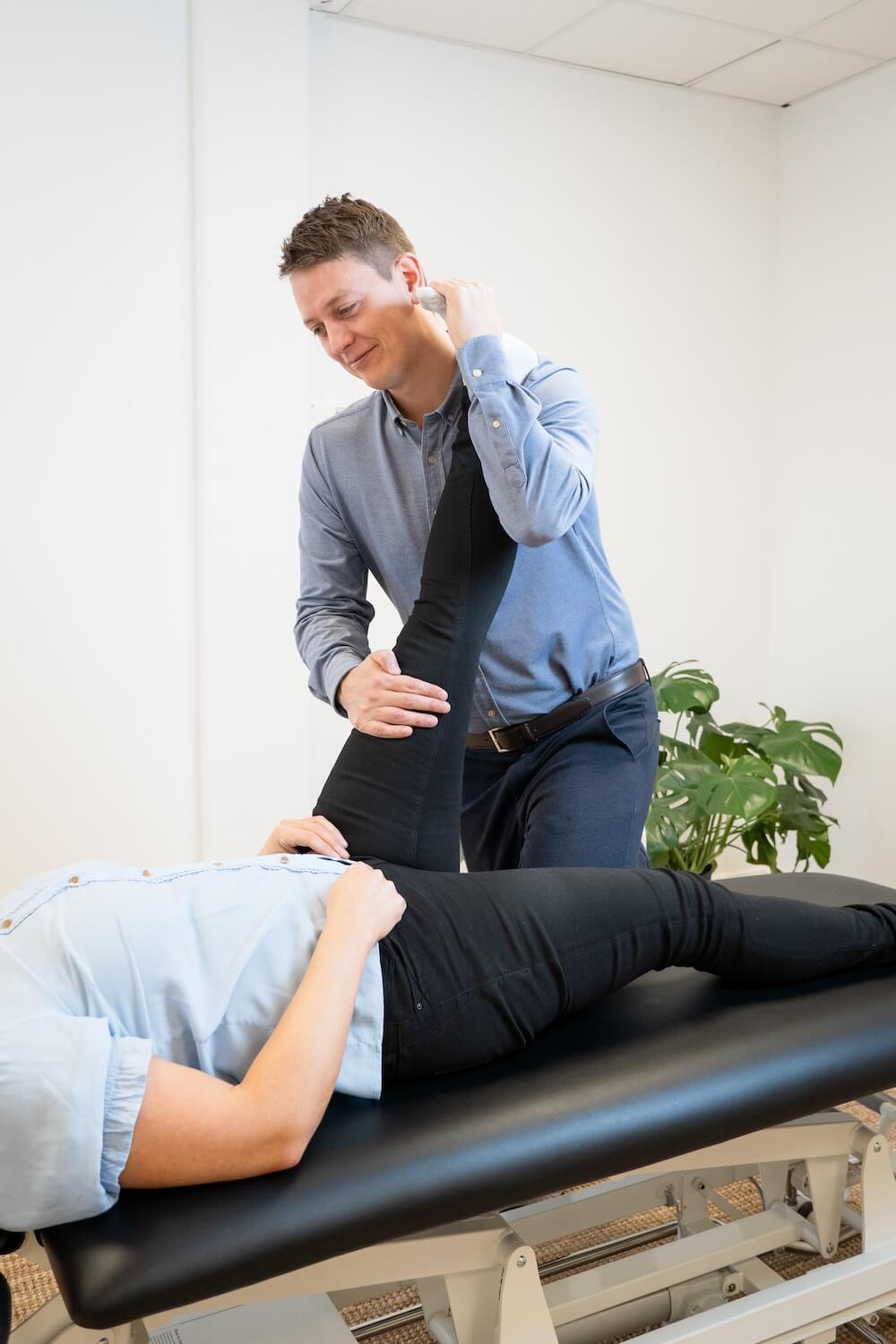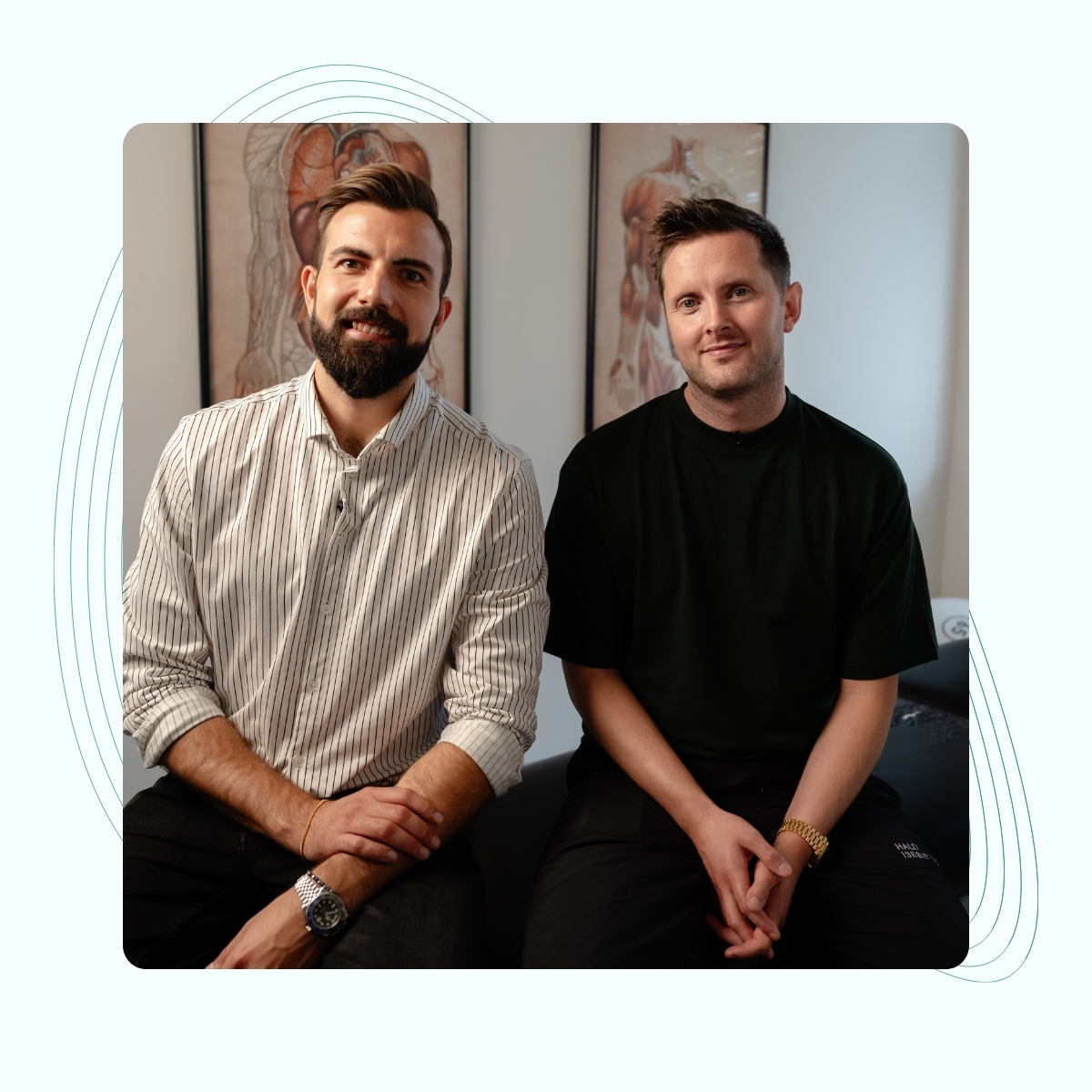We treat
Achilles tendonitis
Learn more about Achilles tendonitis on this subpage.
Achilles tendonitis
Achilles tendonitis or Achilles tendinopathy is a relatively common condition. The condition can occur in people who are inactive but primarily occurs in sports and athletics. Activities such as football, handball, etc. where a combination of running and jumping is part of the activity has a higher incidence rate of Achilles tendonitis.
Inflammation Book an appointment today
Jump to section [Vis]
What is the Achilles tendon?
The Achilles tendon or calcaneal tendon is the thickest and strongest tendon in the body. Anatomically, the Achilles tendon attaches the deep and superficial calf muscles to the heel (calcaneus).
The tendon helps the calf muscles to extend the foot (plantar flex) and to bend (flex) the knee. The tendon is supplied with nerve impulses from the body’s largest nerve, the sciatic nerve.
The Achilles tendon gets its name from Philip Verheyen, a doctor of anatomy, who referred to the mythological story of Achilles who died after being shot in the heel by a poisoned arrow.
What is Achilles tendonitis?
Achilles tendonitis is an irritation of the tendon or surrounding bursa or sheath. Wear and tear and damage to the tendon where there is a loss of normal collagen structure can also trigger the inflammation.
At the cellular level, inflammation rarely occurs with classic inflammatory cells, but when the tendon is stressed, a wide range of pro-inflammatory substances can occur that contribute to the inflammation.
Long-term Achilles tendonitis can develop calcium deposits that stiffen the tendon and in some cases neurovascularization in the area, i.e. its own unnatural blood flow.

Achilles tendonitis symptoms
Achilles tendon symptoms can be broad and varied. In the initial phase where the inflammation starts, symptoms of Achilles tendonitis can be stiffness and pain in the Achilles tendon in the morning that gets better during the day, initiating pain and stabbing pain during loading.
Chronic Achilles tendonitis is often experienced as persistent intense pain that worsens with weight bearing, pain at rest and pain that does not improve during activity.
There may also be pain (ache) in the Achilles tendon when the patient walks normally. The pain can be at the top, in the middle and on the heel bone itself which radiates up the calf and down towards the heel. In many cases, swelling or thickening occurs on the Achilles tendon itself which is sensitive and painful.
Causes of Achilles tendonitis
Causes of Achilles tendonitis can be diverse. In most cases, the triggering factor is strain that exceeds the strength of the tissue. However, there is always an underlying reason that has caused the tendon or surrounding tissue to be weakened.
Here, the cause is often impaired vein or arterial supply to the tendon itself. Most often the venous system is the cause here, as the venous system can be strained by sedentary work as the veins need the venous pump (muscle pump).
Changes in the neurological signals to the calf muscles can also lead to reduced strength of the muscles or increased tension of the same muscles.
Problems around the sciatic nerve, such as piriformis syndrome, or herniated discs, are often the cause. Blood problems such as rheumatological disorders (gout, muscle arthritis, rheumatoid arthritis, etc.) and problems with the acid-base level in the blood can affect the development of Achilles tendonitis.
Enlargement of the heel bone (Haglund’s deformity) has often been associated with the development of inflammation of the bursa between the tendon and the heel bone. Incorrect positioning of the foot or forefoot (hyperpronation and sunken forefoot), flat feet, etc. are significant for the development of increased strain on the tendon, which contributes to the development of inflammation of the Achilles tendon. Other causes such as incorrect footwear and excessive training also play a role.

Heel pain or Achilles tendonitis?
Differential diagnoses for Achilles tendonitis can be difficult to distinguish from each other. Rupture of the Achilles tendon will be experienced in the sense that weight bearing will not be possible. Partial rupture of the tendon will, however, resemble Achilles tendonitis, but the difference will be that every time the calf muscles are activated, sharp pain will occur.
Stress fractures in the heel bone are also difficult to distinguish from Achilles tendonitis.
Symptoms of a stress fracture will be that the pain will occur during weight bearing and the pain will also be greater when carrying heavier weight.
Irritation of tendons in tendon sheaths close to the Achilles tendon is also similar to Achilles tendonitis, but the pain will be more on the inside/outside and radiate down the foot. Disc herniation can also be confused with Achilles tendonitis.
Symptoms of a herniated disc will, however, be of a different nature; sensory disturbances, decreased strength in the leg, and radiating pain from the back or buttocks down to the foot will be the symptom picture of a herniated disc.
Good advice against Achilles tendonitis
The development of Achilles tendonitis can be divided into several phases. The first phase is the acute phase, where the symptoms of the Achilles tendon are not particularly bothersome. The next phase is the sub-acute phase, where the symptoms are increasing. The last phase is the chronic phase, where the pain is bothersome.
Acute inflammation of the Achilles tendon – good advice
- Stretching exercises for the calf muscles.
- Moderate exercise – if you feel soreness in the Achilles tendon, you should reduce your activity level, but you should not stop completely.
- Stretching the sciatic nerve – the condition of the sciatic nerve determines whether the calf muscles are too tense or too loose.
- Pay attention to your body’s signals – when you have trained, pay attention to whether your Achilles tendon is sore immediately after, the day after or the days after. Pain in the Achilles tendon the day or days after means that you have strained the tendon beyond its tolerance. Soreness immediately after but not the days after means that you are on the limit and perhaps slightly below the tolerance of the Achilles tendon.
Sub-acute Achilles tendon tenderness and pain – good advice
- Stretching exercises for the calf muscles.
- Light exercise – if Achilles tendonitis symptoms are increasing / worsening, you should significantly reduce your activity level. If necessary, seek professional help to guide you in terms of quantity, intensity and correct training.
- Stretching the sciatic nerve – the condition of the sciatic nerve determines whether the calf muscles are too tense or too loose.
- Respect the way your body signals you – increasing pain means that the Achilles tendon tolerance cannot handle the amount of training you are putting on the tendon.
- Increase blood flow to and from the Achilles tendon – make sure to stretch your chest, make sure to activate the muscles in your leg (especially if you have a sedentary job) and possibly take magnesium. Inflamed Achilles tendons need optimal blood flow so that the inflammation process can proceed optimally.
- Retrain your Achilles tendon – see more in the section physiotherapist rehabilitation of Achilles tendonitis.
Chronic Achilles tendonitis – good advice
- Stretching exercises for the calf muscles.
- No or light exercise – chronic Achilles tendonitis should be handled correctly. If necessary, seek professional help to guide you in terms of quantity, intensity and correct exercise.
- Stretching the sciatic nerve – the condition of the sciatic nerve determines whether the calf muscles are too tense or too loose.
- Increase blood flow to and from the Achilles tendon – make sure to stretch the chest, make sure to activate the muscles in the leg (especially if you have a sedentary job) and possibly take magnesium. Inflamed Achilles tendons need optimal blood flow so that the inflammation process can proceed optimally.
- Retrain your Achilles tendon – see more in the section physiotherapist rehabilitation of Achilles tendonitis.

Our philosophy
Osteopathy and treatment of Achilles tendonitis
Osteonordic has over 10 years of training in specialized diagnostics and treatment of causes of Achilles tendonitis.
We look at the body as a whole, take the body’s medical history as a starting point, and use the best examination and treatment techniques available on the market.
We also educate patients about their own body and its condition. Aarhus Osteopathy and Physiotherapy is a multidisciplinary clinic consisting of osteopaths, physiotherapists, masseurs, acupuncturists, craniosacral therapists, midwives, clinical dietitians, etc. We work across each other’s professional backgrounds and ensure that our patients get the best possible solution for their Achilles tendon problems..
Osteopathy has a special approach to problems with the Achilles tendon. Osteopathy looks at the neck, back, pelvis, organs, blood vessels, nerves, muscles and other connective tissue that are related to the Achilles tendon itself. All in all, to optimize the body’s own healing ability (immune system) so that it is able to reverse the negative pain cycle. The osteopath will loosen the joints, soften the connective tissue, mobilize the nerves and more with manual treatment.
Physiotherapy rehabilitation for Achilles tendonitis
Physiotherapy is often necessary in the fight against acute, sub-acute and chronic Achilles tendonitis.
A physiotherapist specializing in Achilles tendon disorders will help the patient with problems that contribute to the development of Achilles tendonitis. Stability training of the ankle and foot to correct or prevent hyperpronation of the foot, strength training of the calf muscles with the aim of avoiding unnecessary compensations and nerve mobilization of the sciatic nerve to stabilize nerve activity are all necessary to optimize the conditions in and around the Achilles tendon.
The physiotherapist (physiotherapist specializing in Achilles tendonitis) will also ensure that the training conditions, such as training volume, choice of training activities and training intensity, are optimal in relation to the individual problem.
Good exercises for Achilles tendonitis
Recent research shows that eccentric training of tendon tissue and tendon inflammation such as Achilles tendonitis is extremely effective. The mechanisms work so that the fluid in the tendon tissue is squeezed out, the calcium deposits and stiffness of the tendon are optimized and the neurovascularization is reduced.
Eccentric Achilles Tendonitis Exercise
The training should be used as a course of 10-12 weeks. 2 training sessions should be done daily (morning and evening) 5 days a week. The training sessions should all contain 3 sets of 15 repetitions.
Eccentric Achilles Tendonitis Exercise Instructions:
Stand with both feet on a step
Stand on your toes using both feet
Transfer your weight to the injured leg
Slowly (3-6 sec) lower your body as far down as possible getting the heel below the step if possible.
The exercise should be performed with the knee both straight and bent.

Often related injuries
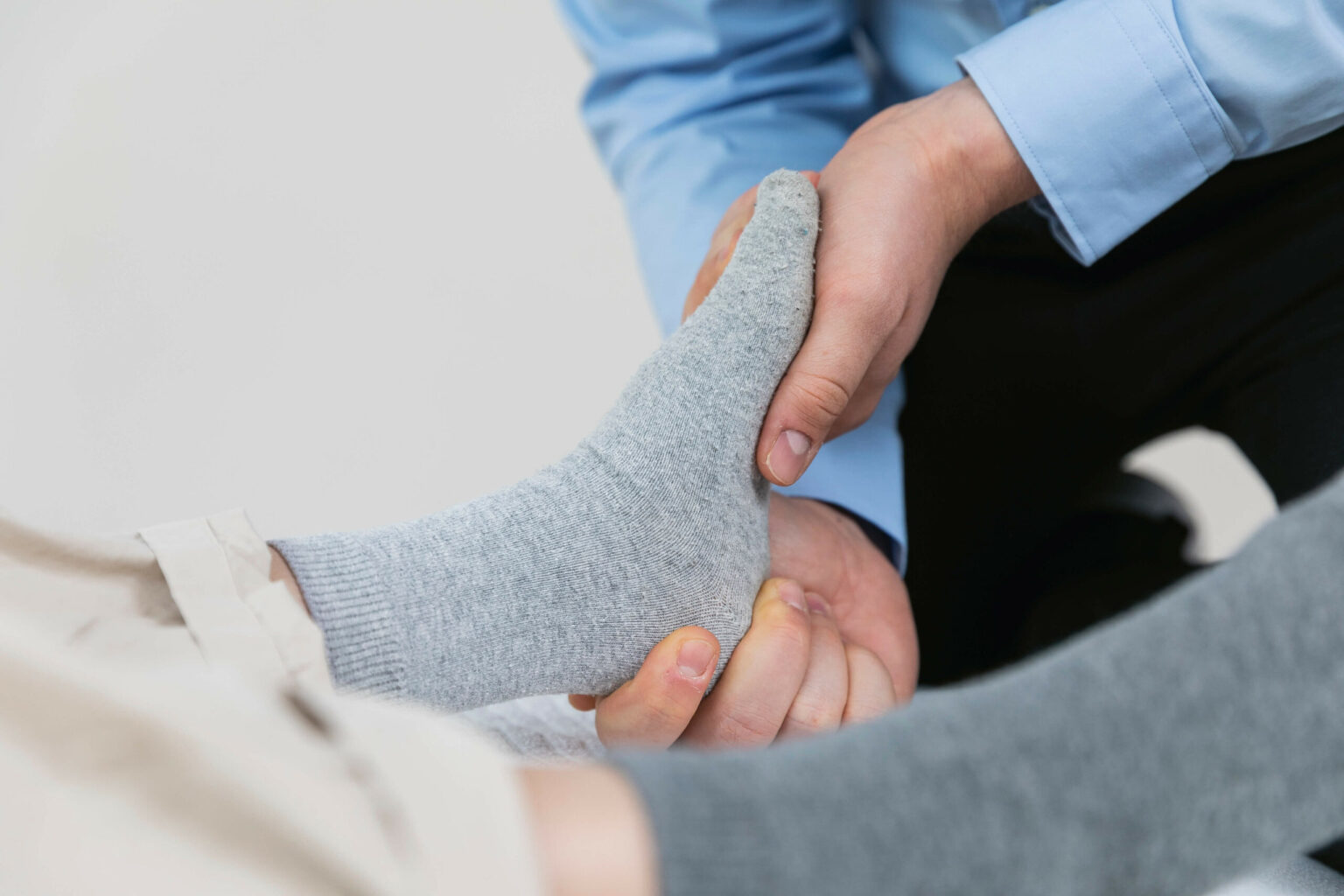
Tenosynovitis in the foot
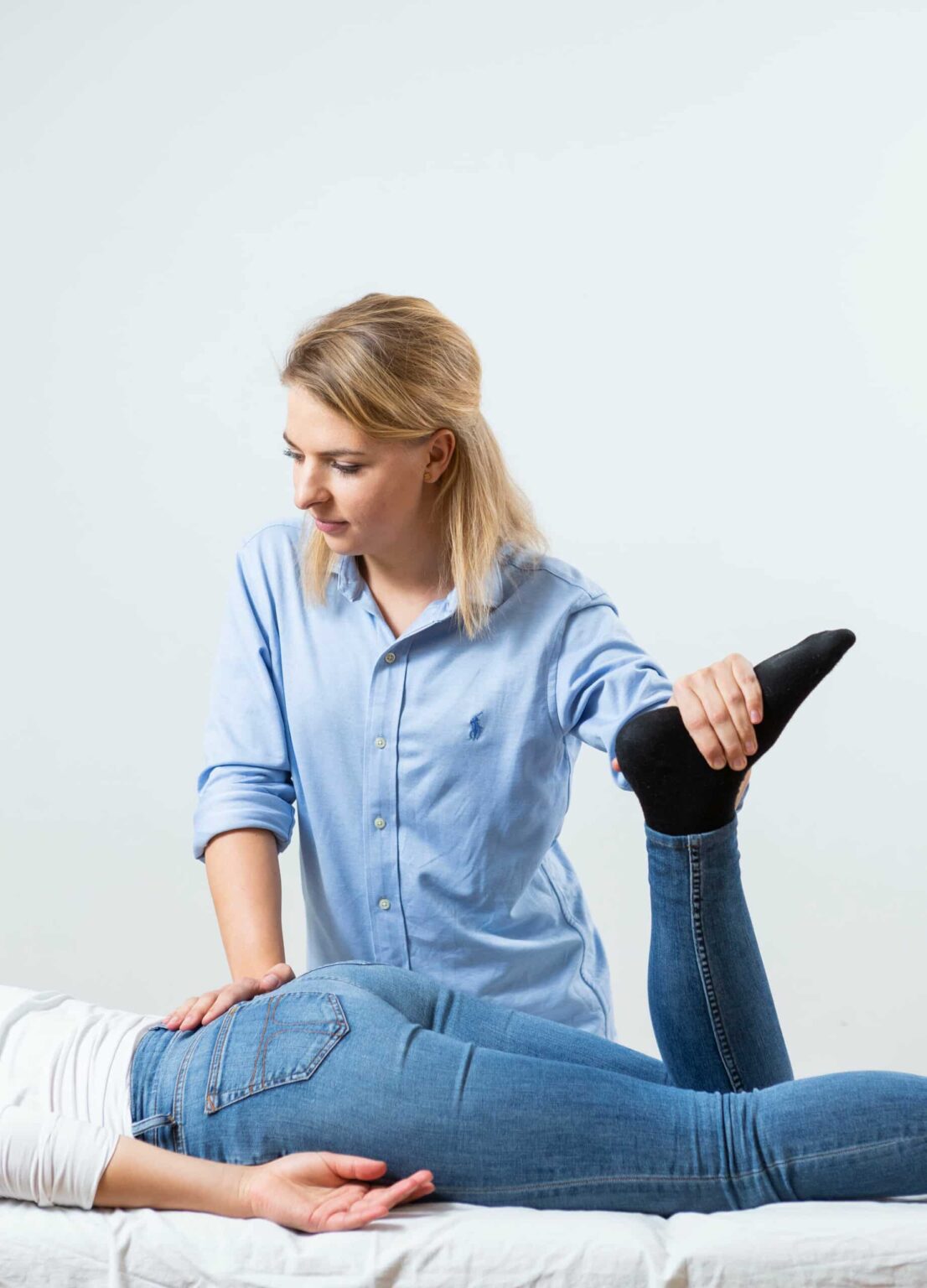
Swollen ankles

Sunken forefoot
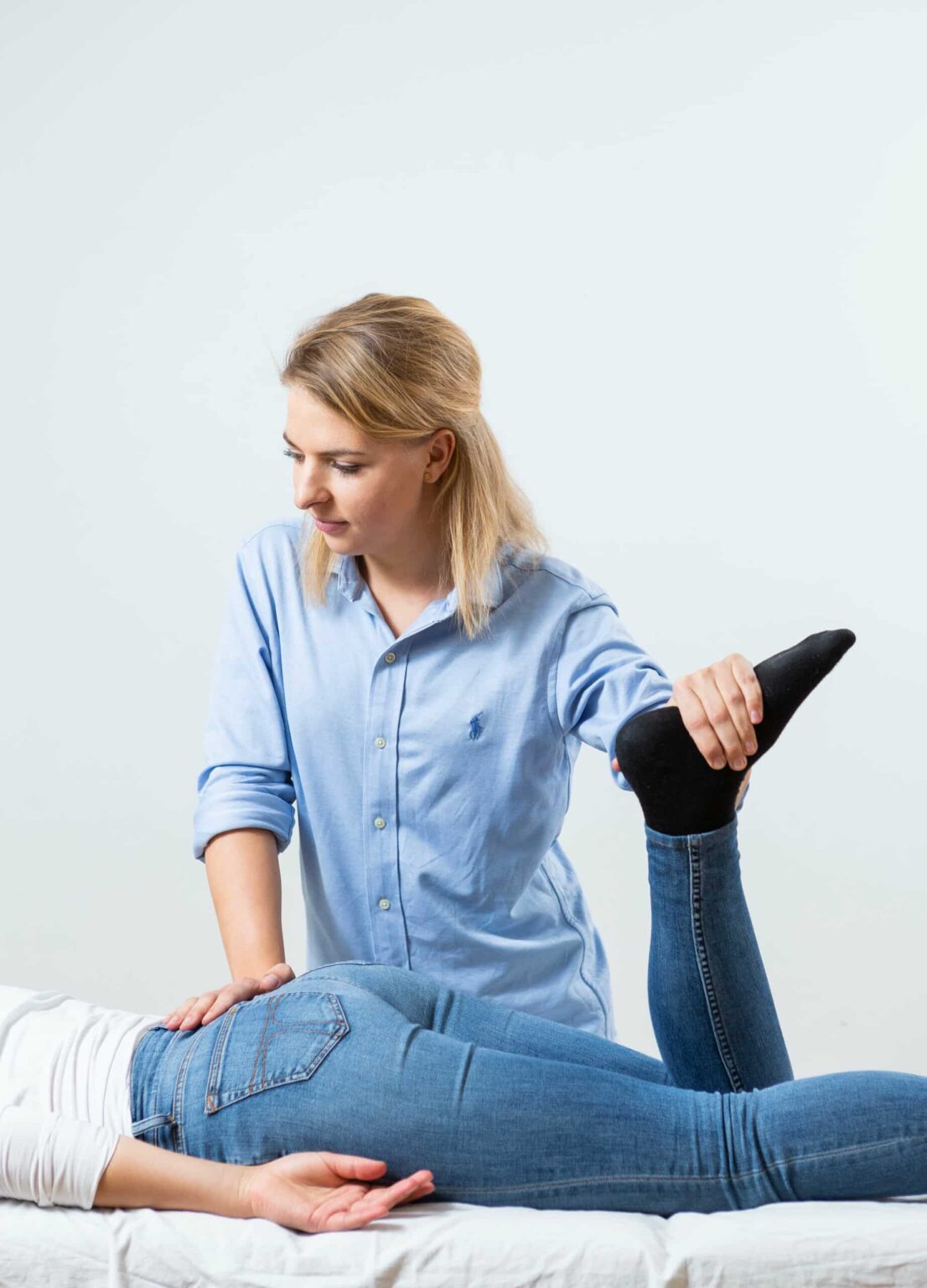
Flat Foot (Pes Valgus)
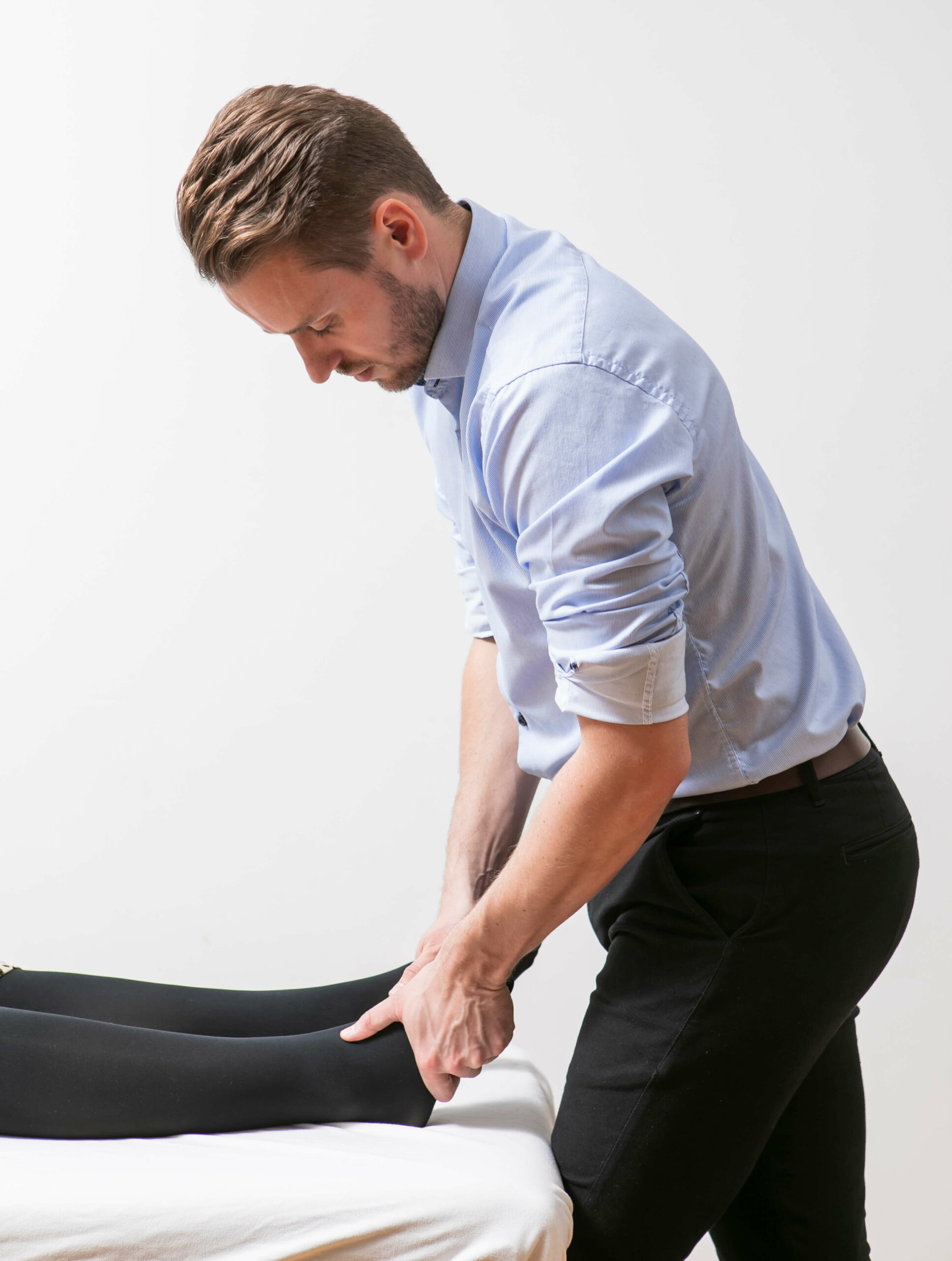
Ankle and foot pain
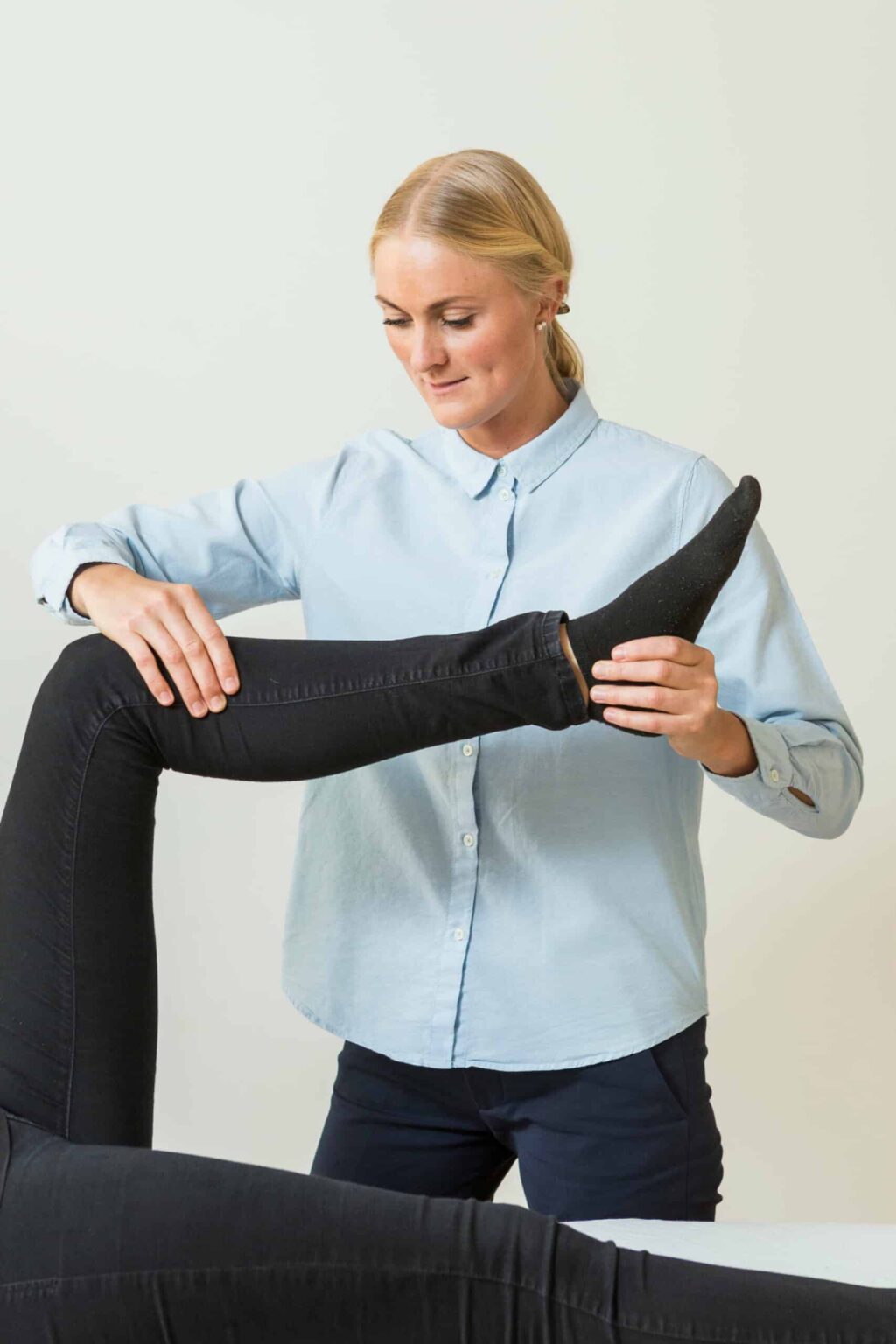
Heel spur
